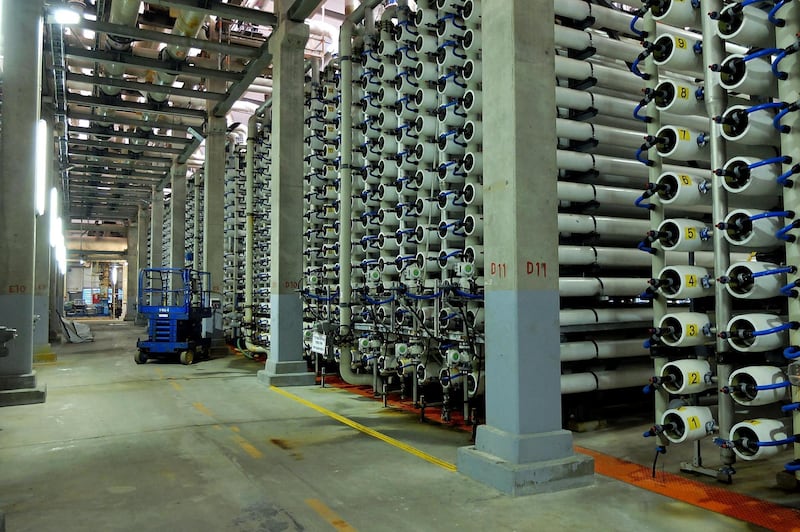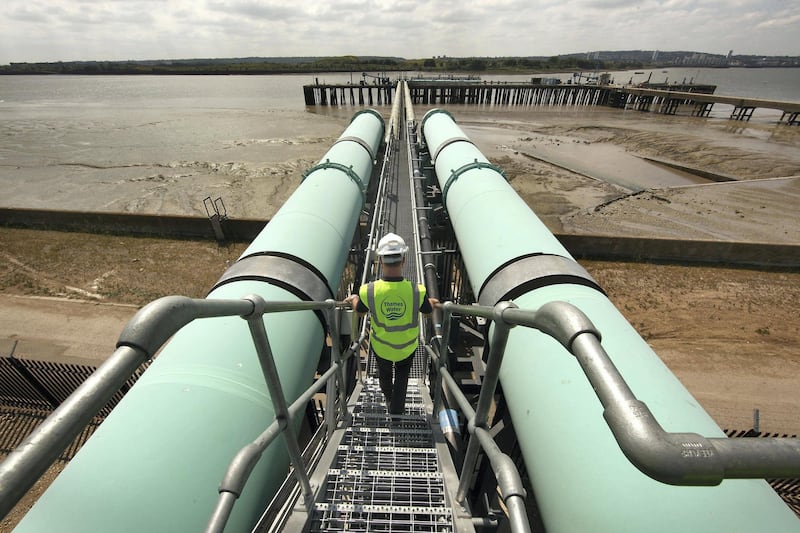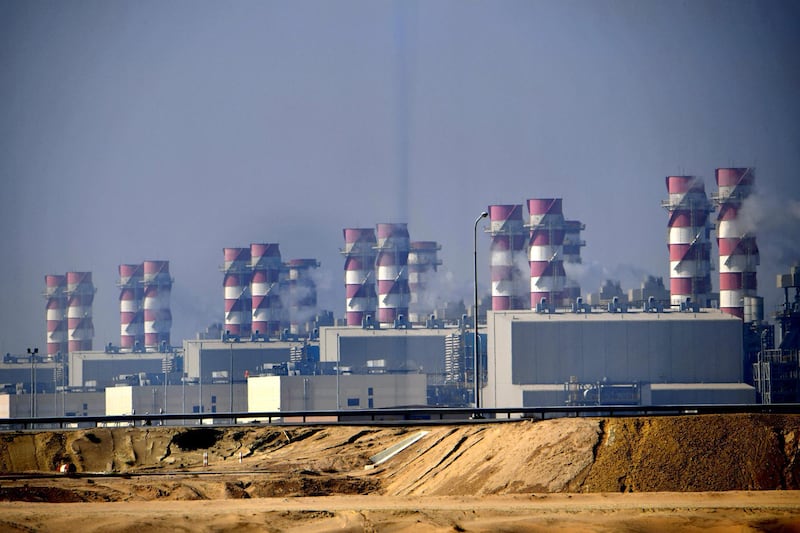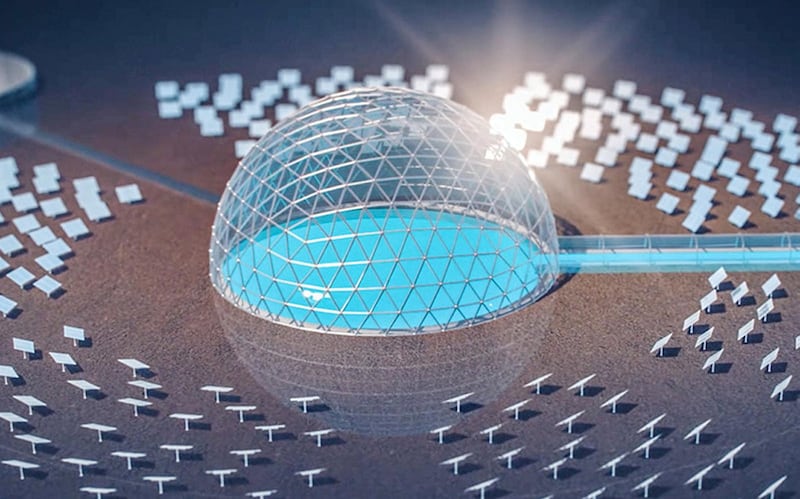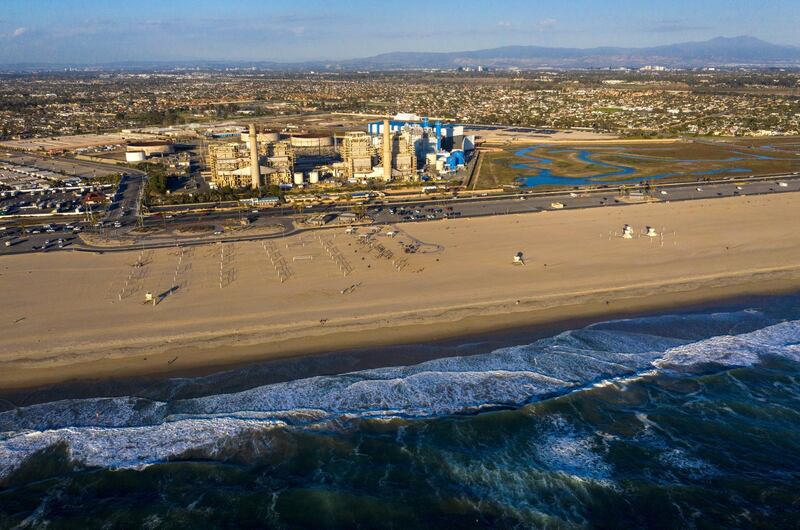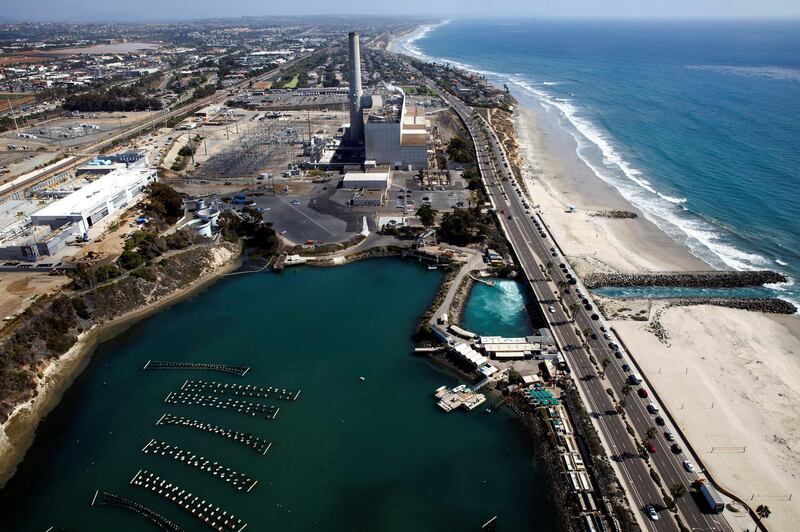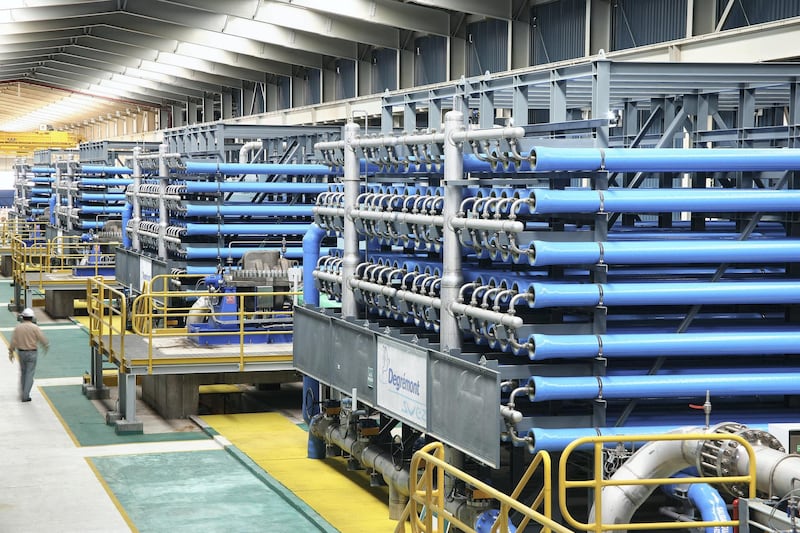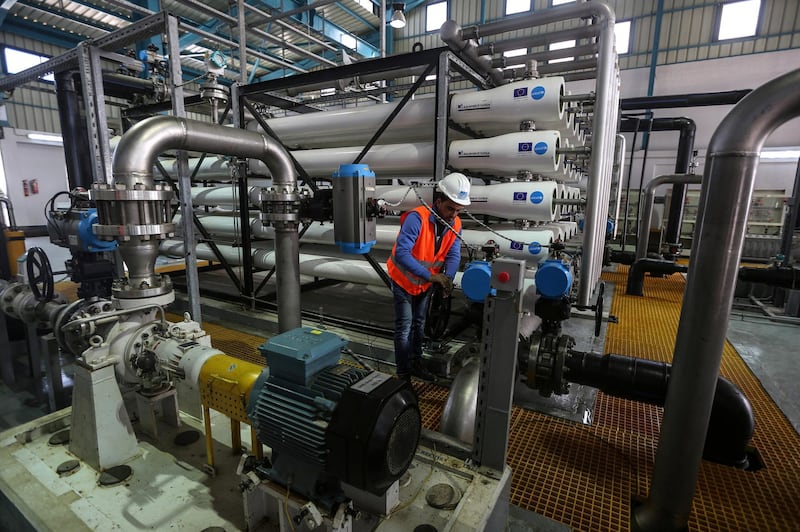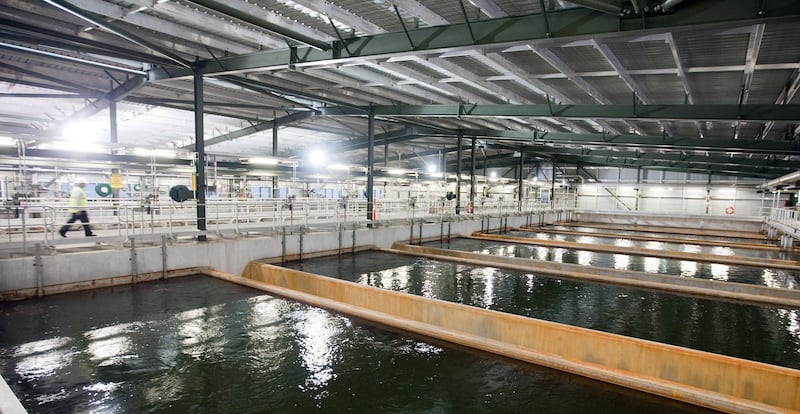In his 18th-century poem The Rime of the Ancient Mariner, the English wordsmith Samuel Taylor Coleridge wrote of a sailor stuck in equatorial waters where there was, “Water, water everywhere, Nor any drop to drink”.
Coleridge might just as well have been writing about someone living in the Gulf region, which has abundant salty seawater but faces the combined challenges of very limited freshwater resources and rapid population growth.
The issue came into focus this week after Dubai Electricity and Water Authority chose Saudi Arabia’s Acwa Power as its preferred bidder to develop and operate the first phase of its seawater reverse osmosis plant at Hassyan.
The Riyadh-based utility made a bid to invest about $914 million in the project, which has a capacity to produce more than 180 million imperial gallons of desalinated water a day (818.2 million litres a day).
The UAE and its neighbours have come to depend on desalination, with the Middle East and North Africa accounting for about 48 per cent of the 95 million cubic metres of desalinated water produced each day worldwide.
There is an increasing reliance on desalination across the world because, if current trends continue, some estimates suggest that by 2030 there will be a 40 per cent gap between water supply and demand.
Dr Muhammad Wakil Shahzad, a senior lecturer at Northumbria University in the UK, who has developed a patented desalination system, said other technologies, such as water recycling, would be able to deal with less than half of this gap. The remainder had to be covered by desalination.
“There’s no way that we can fulfil the water supply gap without desalination,” he said. "The only feasible and practical solution is seawater desalination.”
While desalination is being used ever more widely – there are more than 19,000 desalination plants around the world – it requires large amounts of energy. This typically translates into carbon emissions, with the vast desalination and power plant at Jebel Ali, for example, being largely gas powered.
Effects on on marine life
Desalination also produces about 1.5 to 1.7 litres of salty brine waste per litre of freshwater. When released back into the sea, this can increase the local salt concentration, potentially harming marine life, especially creatures found near the seabed.

The seawater inlets that supply desalination plants are another hazard, because creatures can be killed when they are pulled on to the inlet covers, particularly if water enters at a higher speed.
“You see the fish getting sucked on to the grating. It’s killing things,” Prof David Warsinger, who researches desalination technology at Purdue University in the US, said of some desalination plants in the Middle East.
But round the world, researchers are working on technologies to reduce these environmental effects.
Desalination typically involves a process called reverse osmosis, in which seawater is passed through a membrane at high pressure so that the salt and other substances can be removed.
This is energy intensive, but Prof Warsinger has developed a more efficient method that, instead of having a constant flow of water, involves water being delivered in batches.
“It’s a full batch process that take in a set volume of water, concentrates it and rejects the brine, and [brings in] a new volume of water,” he said.
The energy demand is cut by up to a quarter because the method keeps the water pressure at the optimal level for reverse osmosis.
How renewable energy can help
“We’re also working to hybridise with renewables – wind, wave and solar. We have several prototypes in the lab at Purdue,” he said.
Prototypes are small, but the hope is that funding can be secured to scale them up. Dr Shahzad has also developed a novel energy-efficient desalination method, much of the work on which was carried out at King Abdullah University of Science and Technology in Saudi Arabia. The technology has won five awards, including one at the 2020 round of the Mohammed bin Rashid Al Maktoum Global Water Award.
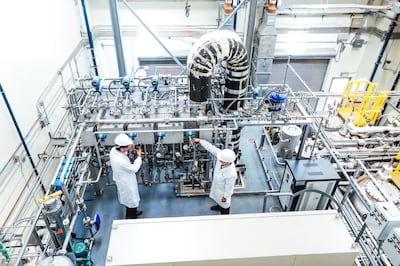
It uses solar energy and combines two processes, one of which is adsorption, the process by which molecules adhere to a surface (in this case, silica gel is used as the adsorbent). The other is multi-effect distillation and, combined, they create Dr Shahzad’s Medad system.
Compared with conventional desalination, the process is said to be almost twice as efficient, so energy use is halved per gallon of freshwater generated.
“We are in discussion with some companies in Saudi Arabia and other parts of the world,” Dr Shahzad said of the technology, which has been used on a smaller scale in Solar Village in Riyadh, Saudi Arabia.
Dubai Electricity and Water Authority is looking to use solar energy more widely to power its desalination plants, but technical hurdles stand in the way of the widespread adoption of renewables.
Because output fluctuates, renewable energy can be problematic, because desalination plants experience fouling if not run continuously.
“The problem with desalination plants is they like to run 24/7,” said Prof Bruce Logan, director of the Engineering, Energy and Environmental Institute and the Hydrogen Energy Centre at Penn State University in the US.
“You would have to turn the plant up during the day and run it down in the evening. Plants aren’t run that way. We don’t have electricity storage to make electricity during the day to keep the plant running at night.”
One potential solution, he said, was to use electrolysis to produce hydrogen during the day, and use this hydrogen to power the plant at night.
“Increasing hydrogen production from green sources, that could fulfil that role for desalination,” Prof Logan said.
Release of brine a contentious issue
The release of brine into the sea as a result of desalination is a major issue. One estimate from 2020 suggested that the amount discharged annually around the world, if spread over the US state of Florida, would be 30.5 centimetres deep.
But at Oregon State University in the US, researchers are scaling up a desalination method that generates only fresh water and solid mineral waste, some of which, magnesium chloride, could be sold to produce magnesium metal.
While discharging brine into the sea does increase the local salt concentration, Prof Warsinger said this effect could be mitigated.

“You can discharge the brine over a very large area so it has negligible impact in the local [area],” he said.
A 2019 study found that the Carlsbad Desalination Plant, a $1 billion facility on the Californian coast, increased salinity levels from 3.32 per cent (by weight) to 3.59 per cent. The salt levels were increased to above those permitted by a local water plan but were smaller than natural ocean fluctuations, such as those caused by season, location or local rainfall.
Researchers from the University of California, Santa Cruz found no effects on the local marine fauna, such as brittlestars, which are similar to starfish.
“Our results indicated that to minimise environmental impacts discharge should target waters where a long history of anthropogenic activity has already compromised the natural setting,” they wrote.
“To ensure adequate mixing of the discharge, brine desalination plants should be constructed at high-energy sites with sandy substrates and discharge through diffuser systems.
”The potential impact of desalination plant inlets can be mitigated by installing them beneath sand. Any seawater that enters the plant is filtered through the sand, which reduces harm to marine organisms or their eggs.
“It’s minimal impact, but that’s expensive,” Prof Warsinger said.
In some instances desalination plants may offer some environmental improvements. For example, Poseidon Water Co, which wants to build a plant off California, has offered to fund work to prevent the build-up of sand that threatens wetlands, although their offer has generated controversy among environmentalists.
“Our current water practices are really deadly to the environment. Desalination in comparison is very mild,” Prof Warsinger said.
He said that other methods of securing freshwater – such as extracting it from rivers – already creates environmental problems more significant than those from desalination.
“The Colorado River doesn’t run to the sea,” he said. “It’s used up. It’s an environmental catastrophe.”
*A version of this story was first published in March 2022
